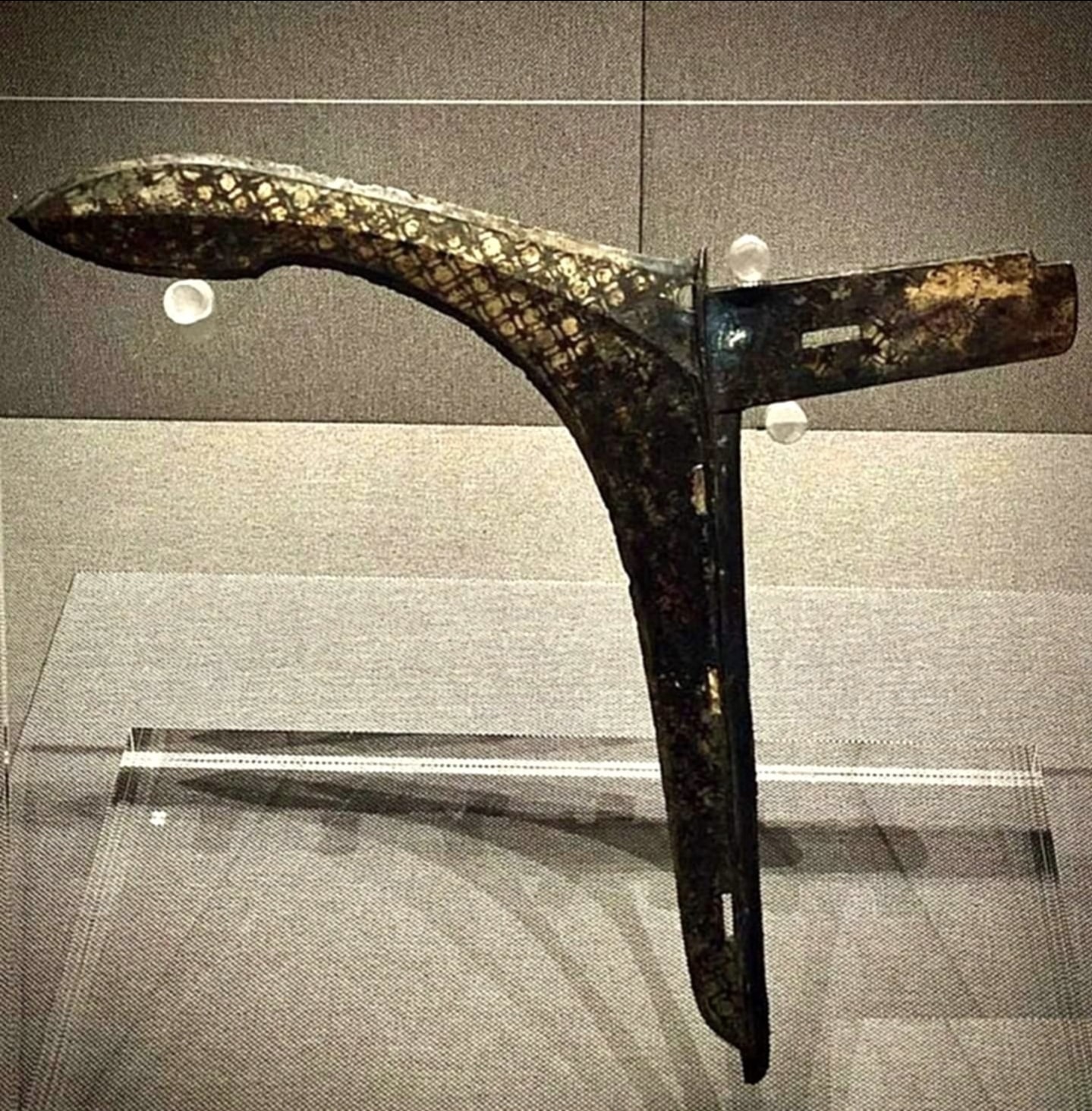UNIT: Late Spring and Autumn era/ Early Warring States Armored Guard 战国甲士

ARMORED CHARIOTEERS
Elite armored chariot guards (chebing 车兵, lit. "chariot troops") were protected by heavy armor and therefore called "armored soldiers" (jiashi 甲士). Their mode of fighting required extensive training, not only to achieve mastery in hitting the enemy, but also to thrust into the heart of the formation, kill enemies and capture their officers. As chariots became heavier, chariots became manned by three men, the left one fought with bow and arrow, the right one with spear and halberd, and the central person steered the vehicle. The warhorses were sometimes armored with prized lacquered hide armor. Lacquered hide armors from this period sometimes included those made from rhino hides, which were nearly impervious to slash and piercing blows.
Armored guard's heavy armor- black lacquered hide stitched together with red silk. Hide armor during this period varied from ox hide to more expensive hides such as rhino that are almost certainly reserved for the aristocrats. The boots of some aristocrats are fashioned from white deer skin. Material evidence excavated from the Tomb of the Marquise Yi of Zeng (Sui).
FOOT GUARDS
Each chariot was usually accompanied by a certain number of infantrymen (tubing 徒兵, or "ground troops" lujun 陆军) , it would be their job to exploit any breakthroughs the chariots made. However the number of infantry guards were not fixed. They ranged between 10 and 100. Ten footmen was the usual number of troops accompanying a chariot during the early Spring and Autumn period, and 75 was a common size in the late Warring States period for light chariots. The army of Chu used 100 persons per chariot, but this was not necessarily adopted by other states. The Terracotta Army soldiers of the Qin army had varying numbers of foot guards for their chariots.
Quadrigas chariots were deployed during this period- yoked by 4 horses. By the mid and later Spring and Autumn period practically all of the charioteers were heavily armored. Some lancers wielded jis with several dangerous blades. Nearly all chariots were either 2 horsed or 4 horsed.
Late Spring and Autumn era chariots, by this time both the horses and the riders were almost always heavily armored, with thick lacquered hide armors protecting the horse's front and sides heavy armor protecting the riders.
This bronze blade was once attached to the axle of a chariot wheel, and is known as a wei. It was used to keep enemy foot soldiers away from the chariot.
Threat range of a chariot. In this graph 2 opposing chariots rushes to engage each other (the lancers are located on the right side of the craft) however- it also demonstrates the blocking potential of the chariots as the chariots also blocks the movement of the vehicle directly in front of them.


Thank you to my Patrons who has contributed $10 and above: You made this happen!
➢ ☯ MK Celahir
➢ ☯ Muramasa
➢ ☯ Thomas Vieira
➢ ☯ Vincent Ho (FerrumFlos1st)
➢ ☯ BurenErdene Altankhuyag
➢ ☯ Stephen D Rynerson
➢ ☯ Michael Lam
➢ ☯ Peter Hellman
➢ ☯ SunB

%20(1).jpg)
.jpg)
.jpg)



%20(1).jpg)
.jpg)


.jpg)
.jpg)

%20(1).jpg)
.jpg)









Comments
Also? Achaemenid still used chariots- but more like a gimmick, Persia used them as witnessed by Xenophon and apparently Pontus used them against the Romans even as late as 47 BC (vs Caesar) so~